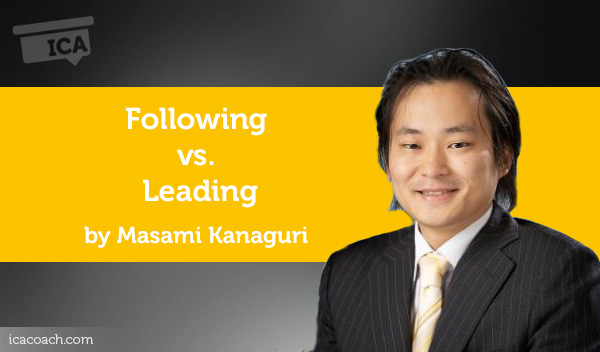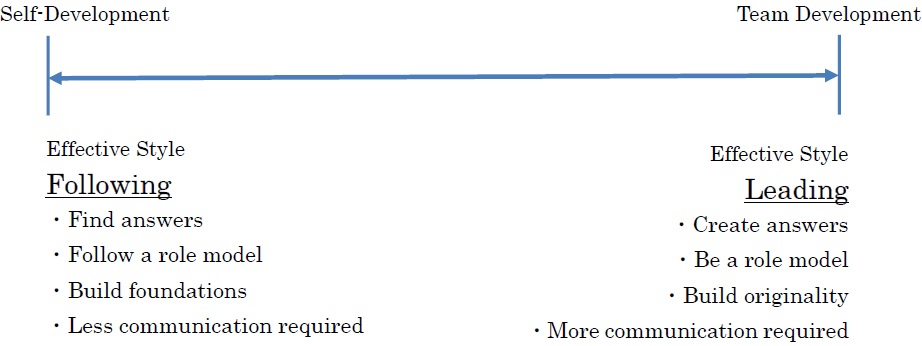
A Coaching Power Tool Created by Masami Kanaguri
(Business Development in/with Asia/Asian, JAPAN)
When we admire somebody, we usually try to get closer to that person. We may search for more about his/her history, read books he/she published, go to events he/she shows up to. While you are in this mode, your actions are conducted based on following somebody. This mode allows you to gain more knowledge about who you admire. The more you learn about your favorite person or what the person has learned, the more you feel you get closer to the person.
Let me introduce a short story of an engineer who rapidly improved his engineering skills in the car industry.
Mr. T is a man in his 40s who works in one of the biggest car industries in Japan. He is a highly skilled engineer for car engines and he has been successfully promoted in the company. He is highly knowledgeable about car engines, therefore many colleagues rely on him when they have any questions about engines.
When he was 7 years old, he happened to watch a documentary program on TV. This changed all the rest of his life. The documentary was about Soichiro Honda, the founder of Honda Motor Co., Ltd. He was impressed by his passion for making cars and wanted to become a great engineer like him. Ever since then, he learned about Soichiro Honda, studied hard about cars, graduated from one of the most reputable engineering universities and finally joined in an R&D department in one of the biggest car makers in Japan. Ever since then, he has successfully built a great career as an engineer.
After Mr. T was impressed by Soichiro Honda, he made his life go where he wanted it to go. He had a very strong role model and his strong passion to become “like Honda” generated his motivation to make an effort to get closer to the person he admires. His “following” mode to Soichiro Honda enabled him to overcome a number of challenges.
Seven years after he joined his current company, he became the project leader of a new engine development project. He got about 10 project members as his subordinates. Management was expecting great results from the project. However, Mr. T ended up experiencing huge problems in his career.
It was obvious that Mr. T was the most skillful and knowledgeable person in the project, therefore, all the project members were expecting him to lead the project and to give decisions and orders to them as the project leader. However, they were hardly told what Mr. X expected them to do. Instead, he spent most of his time researching without others getting involved. All the tasks assigned to the subordinates were chores which even part-time level employees could handle, although all the project members were “selected” by management. They were not as knowledgeable and experienced as Mr.T but they were, like Mr. T, proud to be engineers.
As time went by, the mood on the team became worse and worse and finally, some of the project members wanted to leave the project team.
Obviously, the team was in danger. But was Mr. T neglecting to manage the project? It looks yes so but actually, no — at least not for Mr. T. After he was assigned to be the project leader, he spent a significant amount of time researching in order to lead the project successfully. But the problem was that he was still in the “following mode” even after he became a project leader who was supposed to manage 10 subordinates as well as the project. He was working hard every day, thinking “what would Honda do to bring success here?” He was very eager to “follow” his respected “Honda Soichiro” and had totally been blind in terms of “leading” people around him.
When you start building up your knowledge, skill, career and anything you desire to obtain, having your own role models and trying to follow them is a good way to efficiently get closer to who you want to be. As long as you are in the following mode, there are always answers around you and you can literally follow them. But because the answers are created by someone else and not you, there is no originality. There are no strong messages. Thus it is hard to influence people in the team. If you are to work with someone and you are supposed to lead them, your mode needs to be shifted from “following” to “leading.”

Coaching Applications
The more people involved in your project, the more you are expected to lead people. People will not follow you if you keep saying, “According to Honda, we should go for this or that.” As a strong leader, you are supposed to show your originality and convey the ideas to other people effectively with powerful messages. A Coach can support a Client to enhance the Client’s leaderships by asking a number of questions that enhance the Client’s unique leadership such as:
As mentioned earlier, Mr. T was doing his best even after he became the project leader but obviously needed to shift his mode from following to leading. Although “following” mode will effectively develop Mr. T’s foundation as an individual engineer, the shift to “leading” mode would have been necessary in order to manage the bigger responsibility with other people involved. This will ultimately expand Mr. T’s potential in order to become a highly skilled engineer to powerful project leaders.